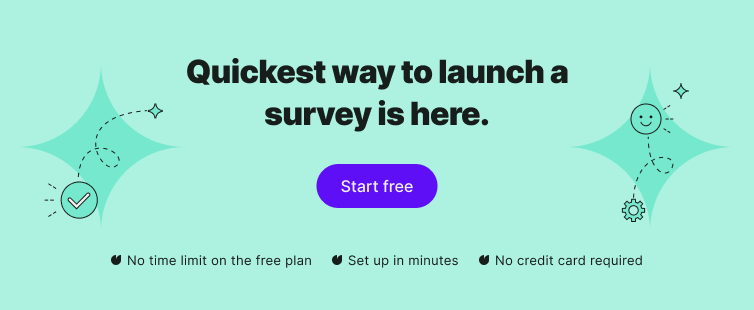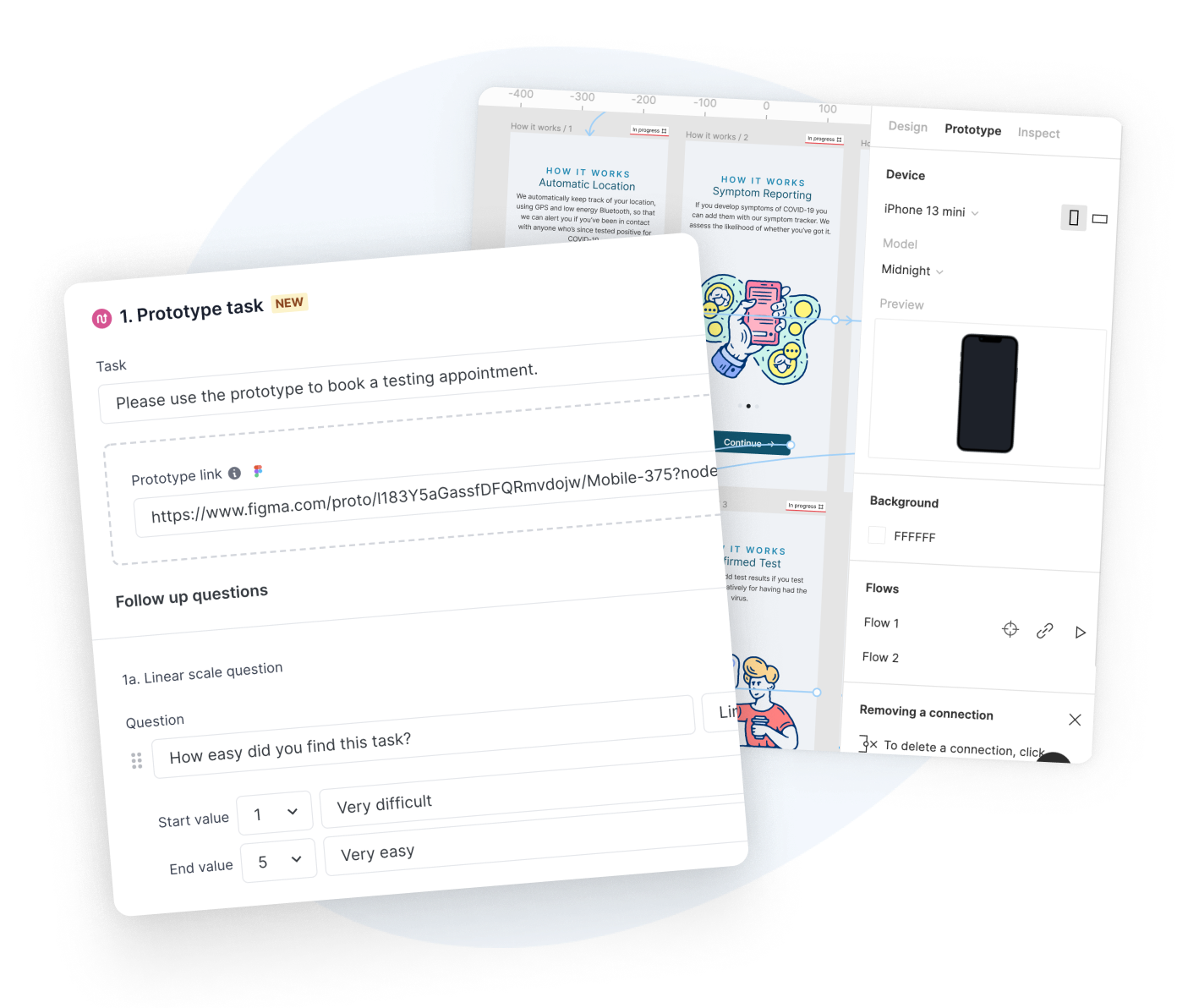Sometimes even the best of plans don’t pan out as we hoped they would. You have an amazing idea for a product, and you manage to convince a group of people to go forward with it. Designers and developers work hard to bring it to life, and then… Your customers just don’t use the product.
It’s not that your product isn’t good at solving a customer pain point - it just has usability issues. And it’s pretty hard to unearth these unless you do proper testing.
Today, we’re showing you some of the best usability testing tools you can try out for your website, mobile app, or SaaS product.

Maze
If you have not yet launched a finished version of your product and you’re wondering if your designs are any good when it comes to UX, Maze has your back. It works with all the most popular design and wireframing tools, so you can get feedback on your usability before your product even goes live.

Use Maze with Marvel, Adobe XD, Invision, Figma, Sketch, and many other tools. Create your design or wireframe in these tools and simply send the link to your customers to give you their feedback.
The feedback you get goes beyond qualitative insights. You can do split testing, prototype testing, heatmaps, and task analysis. In short, you can make an educated decision before making a project go live and waste time and money.
You can run one usability test in the free plan, which is good enough to get you started and show you the possibilities of Maze. Paid plans start at $25 per user per month.
Woopra
You may have heard of Woopra because of its amazing integration with Survicate. If not, you may have heard of it because it does many great things for SaaS products. Using Woopra, you can analyze your entire customer journey, from the first touch, up until the conversion or churn - hopefully, the former being the case.

If you’re the visual type, you’re going to love Woopra. It breaks down the entire customer journey into specific steps. Sign up, landing page, feature page, upgrade page. Each of them is a chance for a customer to take some action.
Woopra analyzes all these actions and lets you know where issues arise and which pages and sections of your website bring actual results. You can pinpoint the channels that get new revenue and those that drive nothing but churn.
The free plan is solid and valid for up to 500,000 actions per month. Paid plans start at $349 per month. However, you can run out pretty quickly if you have a large website and a lot of customers.
UsabilityHub
It’s always a pleasure when a product justifies its name. UsabilityHub is just that, one hub where you can run various usability tests. Designed for remote tests, it can let you test existing products or prototypes you have not yet released.

For example, you can run five-second or prototype tests by importing your designs from Figma. One interesting feature is card sorting, which lets your customers sort page elements as “cards” according to what makes the most sense.
Other cool features include preference tests, where you can give several options to your customers in terms of designs and UX, and they choose the best one. Moreover, first-click tests show you the most appealing content on the page.
The free plan gives you up to 3 collaborators and the ability to run tests up to 2 minutes long. Paid plans start at $89 per month, which is good for three collaborators and unlimited tests.
VWO Plan
VWO is probably the best-known A/B testing platform, used by big names such as AMD, Ubisoft, Hyundai, and many others. It has a few different products, but the one we’re interested in now is called VWO Plan.

VWO Plan is a comprehensive platform for customer feedback and user research. Besides running your testing on this platform, you can use it to import feedback from other locations such as Google Docs, Sheets, project management tools, emails, and more.
The VWO plan lets you set up different experiments within your product or website. Then you can immediately track the effects of those changes on your key product metrics.
Given its enterprise audience, it’s not surprising that you cannot see the price on its website. The pricing will depend on the features you need, so you have to get in touch for a custom quote.
Optimal Workshop
If you haven’t heard of this Optimal Workshop before, you have encountered Reframer, a tool we recently mentioned. This is not just one app - it’s a collection of tools for the user and usability testing.

Optimalsort is their card sorting portion of the app, where customers can sort page elements according to their preferences. Treejack is the tree-testing part of the app where you get to sort your menus and page elements according to logic - and your customers’ feedback. Chalkmark is the first click-testing part of Optimal Workshop, giving you an easy way to test the most interesting part of a page for your customers.
The free plan is seemingly generous as you get access to all tools, but there is one caveat. You can only do one live study at a time. Paid plans start at $208, giving you unlimited studies, responses, and participants. It’s a pretty solid offer considering the features and comparable costs of other entries on this list; it’s a pretty solid offer.
Pingdom
Whether your website is running or not is just as important as the usability of its elements. It’s even more important because a website that is down is essentially useless for conversions or any other meaningful interactions on your website. This is where Pingdom helps.

This tool tests your website for uptime and lets you know if it’s unavailable for your customers. It does this by monitoring your website from over 100 locations all around the world. Besides that, it keeps track of website speed and any issues with loading times.
There is a difference between synthetic monitoring and real user monitoring, and you can purchase the two plans separately at $10 per month. Immense value for money, considering the crises you can prevent.
TestLodge
While most tools here were built for designers and UX experts, TestLodge was primarily built for developers. You can use it to see which aspect of your website works and what needs to perform according to expectations.

From something as simple as a signup form all the way to complete feature pages, you can test it all. You can connect your tests with your favorite project management or bug-tracking tool so your developers stay on track with what’s happening in real-time.
Unfortunately, there is no free plan available. Paid plans start at $34 per month, which gives you 50 tests.
Userfeel
Being a writer, I love a good play on words. Userfeel calls itself the “better user testing platform,” which is a clear shot at UserTesting, the most popular tool for usability testing, but not without its faults.

Userfeel aims to solve the problem that UserTesting has - enormous monthly costs of running tests for your website and product. To get there, they compete on price, but more on that in a second. Depending on the level of hand-holding your users need, you can use this tool for moderated and unmoderated testing.
There are over 150,000 participants in Userfeel, and you can grab their opinion on your product. Once you want to start, just enter the participant criteria, and you can run your test. Alternatively, you can bring your testers to Userfeel.
Prices are very reasonable and start at $30 per test if you have your audience or $60 per test if you want a Userfeel participant to enter. Those numbers are valid for unmoderated testing. In the case of moderated tests, prices go up to $60 and $120 for your own and Userfeel participants, respectively.

UserZoom
When it comes to the options you have for usability and user testing, very few platforms come close to UserZoom.
You can do live interviews with actual people and dip into your pool of customers or use some of UserZoom’s. According to their website, they have over 120 million participants with different profiles that you can tap into and get their feedback.

All the usual good features are there, such as tree testing, car sorting, click testing, and many others. However, many UX specialists and product experts agree that video interviews are the biggest strength of UserZoom.
As often happens, you need help getting UserZoom pricing on their website. The plan will depend on the features you want to use and the number of customers you have. A bit of internet research shows that the cheapest plan will set you back at least $9,000 per year, which is costly, especially compared to the other tools we mentioned.
LookBack
You can use LookBack to get real-time insights about your product and how customers get around when using it. You can do everything from small tasks, such as checking out a new feature, to major ones, like reviewing a dashboard. Whether remote or in-person, you can get recording sessions with live commentary from your customers.

To start reviewing something in your product, all your customers have to do is open up a link to download your app. As new recordings come in, you can see them in the LookBack dashboard, sorted according to different criteria.
You can grab the free trial and use it for 14 days, which is a fairly generous offer. Paid plans start at $99 per month per team.
Zapier
This technically isn’t a usability testing tool, but the great thing about Zapier is that it works with most of the tools mentioned above. It works with more than 5,000 different apps. If you use any of the tools mentioned above or want to integrate them with something else, Zapier is what you need.

If you need just the basics, you can grab a free plan for up to 100 tasks per month. Paid plans start at $19.99 monthly, giving you access to 750 tasks per month - plenty for the average user.
Wrapping up
Usability seems like an afterthought until you use one of these tools and start seeing the effects of your UI and UX decisions. With the tools we just listed, you can uncover major problems early on before they can impact your revenue.
And if you’re looking for an extra tool to collect customer feedback, surveys are your best choice. Try out Survicate today and find out how you can collect customer feedback with just one tool. Grab your free trial today! Also, you can foster your decision making by checking our newest ranking of best website satisfaction tools.

.webp)






.svg)
.svg)
.svg)

.svg)


.svg)







.svg)




.svg)

















.svg)






























.svg)

.svg)
.svg)

.svg)



.svg)






.svg)

.svg)


.png)






